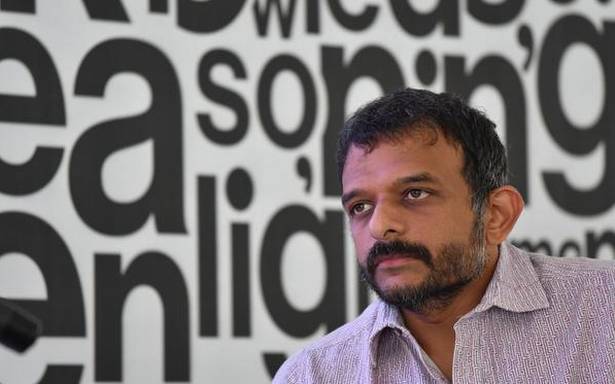ART NEWS
Layers of marginalization – The Hindu
6The summer months are particularly busy for the artiste community. Spring sets in, it is time for Ramanavami music season, and it is vacation time – the world of culture is bustling with activity, and the bulk of the earnings for an artiste comes from this time of the year. COVID 19 the global pandemic however, threw things completely out of gear: a situation unanticipated and unprecedented, it has shut the world down without a warning. The artistes are not immune to this, in fact, they are among those worst affected. They have lost livelihoods. Most of them who are not even in the government’s radar of PDS or Aadhaar, are facing the worst times of their lives; putting a single meal on the plate has become difficult. Auditoriums are closed, concerts are not happening, temples, churches and all religious spaces have shut doors, no village fairs, no festivals, movement has been restricted – in effect, every road is a deadend. Many artistes are also putting an end to their lives.Sumanasa Foundation, with Carnatic vocalist T.M. Krishna as its chief driving forces, sprung into action almost immediately. Calling it the Covid-19 Artists Fund, the Foundation supports makeup artists, bharatnatyam dancers, instrument makers, light and sound technicians, yakshagana and talamaddale artistes, regional theatre, folk artistes and even backstage crew. The initiative is both crowd funded and supported by the Sumanasa Foundation, a non-profit organisation that was founded in 2004. The Foundation, in its innings of over a decade and a half, has done various things. It has supported talented young students in underdeveloped rural areas. The Svanubhava, Kalai Koodam, and Art on Wheels are other projects that have been initiated by Sumanasa. Beginning March 2020, Sumanasa Foundation has been providing direct cash transfers to artistes. They launched a crowdfunding campaign on their website to collect funds. T.M. Krishna who set up a Covid-19 Artists Fund, initiated the whole process with a fund raising concert on March 29. This shut-in concert was originally planned with violinist Akkarai Subhalakshmi, mridangam player B. Sivaraman and ghatam player N. Guruprasad, but because of the lockdown it could not proceed as planned. T.M. Krishna did a solo concert and it raised Rs. 9 lakhs, becoming the seed fund for the project. The focus was initially on the artistes of South India, but it has now extended to artists in Delhi, Bihar, West Bengal, Meghalaya, Madhya Pradesh and Rajasthan. They have helped nearly 2119 artistes raising over 63,90,900 lakh rupees. The foundation is particularly concerned about that large community of performers who remain completely out of the digital economy and are struggling to fulfil basic needs. An interview with T.M. Krishna. You’ve taken on a mammoth task. How have you gone about identifying artistes, since now it has moved beyond Tamilnadu and has become a pan Indian project?The problem is mammoth. Around five of us from Sumanasa Foundation began making calls to performing artistes in rural Tamil Nadu. We got in touch with impresarios, NGOs, organisations and activists working in the field of culture to find out how we could support artistes. We began to receive support from various quarters, and soon we began to take help of organisations across India. The Foundation has now networked across 17 states in India. We began with Tamil Nadu, but over the last few months worked in 17 states across India. For nearly 2000 artistes, via bank transfers we have been able to share Rs. 3500 – 4000. This is a very small sum, but our hope is that atleast one month’s supplies is taken care of. There’s only this much that we can do as small collectives. Ideally, the state should take this up. The artistes need a NREGA kind of programme that guarantees work and income through the year, as most artistes live below poverty line. There is so much that the government can do. They can do it through performances, teaching opportunities in schools and colleges, lecture demonstrations… plenty can be done. By doing all this you will not only ensure livelihood, but also rejuvenate the art form. It is very important to bestow respect and dignity upon them. On our part, we have begun discussions with friends who can help us develop a proposal using the NREGA as foundation.You’ve been in touch with so many artistes. What are they saying? What visions do you have of the future?There are grades of marginalization at work. First of all, this is an unusual situation even for the privileged musicians. They may not have made great money, but the notion of poverty has never come into their minds before. It’s even more complex because the socially privileged are unable to ask. A lot of people who are in need don’t want to ask for help because it affects their identity. They will say, it is difficult but we can manage. The idea of marginalization is hitting them for the first time. The non-Brahmin Carnatic musicians have always faced the notion of poverty. The nadaswaram or thavil artiste is more or less living with poverty all the time. The little money they make is from temples or other social engagements. When you move away from Carnatic music the situation is worse. Poverty is a status quo for many whether Covid happened or not.So every conversation is different. Every conversation exposes a different need, a different emotional state and a different people. The commonality is uncertainty. The poorest of them who earns just enough for a meal, complains about the lack of economy and the inability to share their art. These performers cannot move with their art like before. They have no audience. COVID has aggravated what was already there as a part of our social cultural hierarchies.There are twin pressures at work. One is to tide over this economic crisis, and two, to remain in the public realm. As a result, the digital space is flooded. What are your thoughts on the digital space?We love quick solutions, and technology we think is the answer. But, this is more insidious than real space. The manipulations and algorithms are deciding what you see and how you see. The digital space is all secretive, much of what happens is unseen. It creates a false sense of equality. For instance, you have access to youtube, and a villager also has access to youtube. So it is trying to tell you that you and the villager are equal!But who is occupying the digital space? Bollywood stars, Hindustani and Carnatic musicians and pop singers. You either need to have mass pull or class pull. These two determine who is hogging the digital space. How is that any different from the discriminative social space? Digital ensures that only certainly people have the advantage of using it. Also, most art forms in the world are niche. In discussion after discussion they say, art needs to reinvent, it has to spread etc etc. This entire discussion is happening based on three art forms. Beyond them is there no art in the world? Most art forms have specific geographic, social and real time presence. To constantly tell the art world that they have to imitate the one percent which is popular is absolutely undemocratic. This is not different from the one percent of the people who have taken over the social fabric of this country and are telling the rest to be like them. Digital mobility is an aesthetic caste system and is occupied by the socially mobile; I too am a participant.Within this group, there is a whole need to seem constantly relevant. To put it bluntly, the content that is being dished out in the digital space is BAD. It is comical and nonsensical. It comes from insecurity even within the elite class. Everyday you have to put a song out, or say something, it is becoming a parody. This is happening both in Hindustani and Carnatic music.The digital audience is not your audience, your audience is physical and real. What you are telling the rest of art community is to go get a digital audience. We believe that digital is the new panacea. No, not at all. We should not be carried away. But globally there is huge funding for the digital. Can we remain globally relevant and be aware of the pitfalls of this medium? Since technology is brutally undemocratic it can turn the prekshaka into a veekshaka, a passive consumer. When we speak of the digital medium, we must realize that it was already happening in the non-digital space. What you see in the digital platform is only an extension of it. The digital space is neither bad nor good. How we put it to use is important. We need to have conversations in reality, it cannot happen in the digital space. Everyone says there is so much social media abuse. It is not happening because there is social media, it is happening because people using social media use it to abuse with greater effectiveness. If you give a gun to a policeman who had a lathi before, the nature of abuse changes. When you see a space only as a consumption model, it has lost its soul. When I changed the dynamics of the concert, a lot of my audience said I had no business to do it since they paid to listen to me. When art becomes transactional, it has lost its social consciousness.You’ve extended support to so many through Sumanasa. Artistes must be looking upon you as benefactor. I am very uncomfortable when they call to thank me. It proves how great their sense of marginalization is and how it further establishes my power. I try using a different language, an equal language, I speak of sharing. It is difficult to change these things unless we change politics and policy. It is such a complex mess. I don’t have the right answer. ***Those who wish to contribute to Sumanasa Foundation, please visit https://milaap.org/fundraisers/support-sumanasa-foundation. the details are here.











